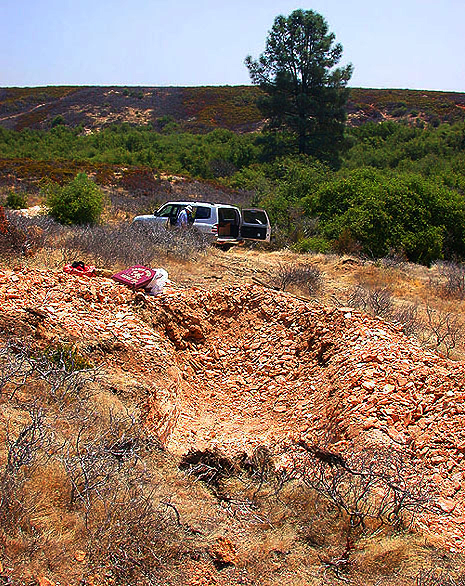
|
Here is the aftermath of our week's collecting expedition. In the distance, paleobotanist Howard Schorn is packing away fossil leaf specimens, readying them for transport back to the archival paleobotanical collections at the University California Museum Of Paleontology in Berkeley. Image was snapped in the mid afternoon of August 1, 2002--our last day of digging at Lygodium Gulch in the Middle Eocene Ione Formation during our week's visit to the western foothills of the Sierra Nevada, Amador County, California. We were well-pleased with the results--loads of nice leaves for paleobotanist Dr. Jack A. Wolfe to analyze using his Climate Leaf Analysis Multivariate Program; yet, we knew that more collecting needed to be accomplished here, eventually. Lygodium Gulch had proved far more prolific than we had ever dreamed. Virtually every piece of feldspar and biotite-rich shale inspected had yielded a least one leaf fragment; the larger blocks of shale, when split, had produced numerous whole, complete leaves, in addition to many other fragmentary specimens that paleobotanists could eventually identify. Here was one of the great fossil leaf localities in California. I could not thank Howard enough for the wonderful privilege of participating in the week-long field trip to Lygodium Gulch. It had been the paleobotanical experience of a lifetime for me, one I would never forget. Please note: All fossil localities in the Ione Formation of Amador County, California, presently occur on private property; explicit permission from the land owners must be secured before collecting fossils there. |